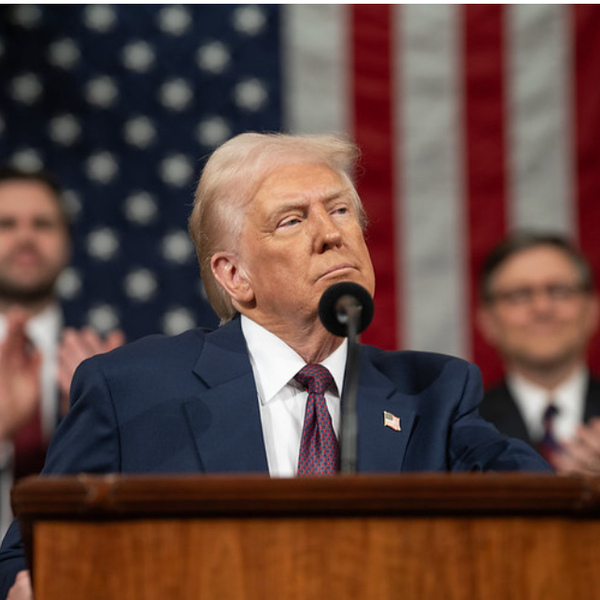
By Christi Parsons, Tribune Washington Bureau (TNS)
WASHINGTON — President Barack Obama will mark the 50th anniversary of the civil rights march in Selma, Alabama, on Saturday, but he will be focused less on the past than on the future, particularly the agenda he hopes to carry out beyond his time in office.
Obama is laying out plans for a post-presidential period that his friends envision as a busy third act of his life, using his public prominence to try to address socioeconomic challenges in the world.
Economic empowerment for the disadvantaged, expanded opportunities for girls and the programs that help young men in the project that he calls “becoming a man” all are likely to figure in the agenda of the last two years of his presidency and afterward, according to people close to him.
More clouded is the role that race will play in his endeavors. Obama has not hinted at how strongly he’ll embrace the role of being the first black former president, and he strives to be seen as the leader of all Americans.
But the historic nature of his appearance Saturday at the Edmund Pettus Bridge, one of the most prominent symbols of blacks’ struggles for the right to vote, is undeniable: Not only is Obama the first black to hold the office, he rode to victory on a wave of support from black voters.
Now, he’ll lay out what he sees as the next steps in Americans’ fight for equality. Emphasizing his forward-looking message will be the presence of Obama’s daughters, Malia and Sasha, who will travel with their father to hear him talk about his vision for the country he hopes to turn over to them and their peers.
“He believes his part in history is to hand this country off not only to another president better than he found it, but to a new generation better than he found it,” said one key adviser, who wouldn’t be named discussing Obama’s views before his remarks.
In Selma, Obama will address an audience roiled by injustices of its own time.
Some echo the event they are gathering to mark. Days before the Selma anniversary, a Justice Department report described routine violations of the rights of blacks living in Ferguson, Missouri, where racial tensions boiled over after the shooting death of an unarmed black man by a white police officer last summer.
Other challenges fail to make the front page despite their depth of impact. Selma, a mostly black community, has a median household outcome of $21,000. Almost a third of the population lives below the poverty line.
“Progress is elusive,” said Rep. Terri A. Sewell, a black Democrat who represents Selma, her hometown, in Congress. “We see it in the unemployment rate. We see it in Ferguson. We’re just not there yet.”
Half a century ago, when protesters gathered to demonstrate on a walk from Selma to Montgomery, the state capital, their demand for voting rights had been compounded by the violent police resistance.
In that first attempt, on the morning of March 7, 1965, they ran into a blockade of troopers at the bridge who ordered them to disperse and then beat and tear-gassed them when they did not.
Images of “Bloody Sunday” ignited a fury across the country and helped to build the political momentum to pass the Voting Rights Act.
Fifty years later, that law has been gutted by the courts. Selma has seen its schools integrated and then segregated again, leaving many residents to wonder what has changed for them.
“Sadly, the next stage of the civil rights movement is on us. The ‘black lives matter’ movement is the current civil rights movement,” said Joshua Rothman, a professor of history at the University of Alabama and the director of the Summersell Center for the Study of the South.
“The school-to-prison pipeline, police brutality, sentencing — every single one of those has racial bias built into them structurally,” Rothman said. “Those things have blown up in the aftermath of Ferguson, but all of those issues were there before…. It really does seem, in the last five to ten years, that we’re going backwards.”
A looming question for Obama is how he will speak to such inequities — at the bridge and down the road.
Expectations for what the first black president would do about those challenges have always been high. As Obama navigates his final two years in office, it’s clear that he plans to address some of the underlying causes with the power of his office.
It was his Justice Department that produced the Ferguson report. His outgoing attorney general is pushing sentencing reform.
Obama has offered few clues about how he personally will talk about racial bias in America after he leaves office. Those close to him are well aware of the backlash that often has come when he has spoken about race as president.
Still, some words have more power years after they’re said. The Rev. Martin Luther King Jr.’s “I Have a Dream” speech is far more potent for Americans now than it was when he gave it, Rothman said.
“A hundred and fifty years after slavery, everybody likes to think they would have been an abolitionist, but most of us would not have been if we had been alive then,” Rothman said.
“The civil rights movement is the same. Most people like to believe they wouldn’t have voted for George Wallace but, at the time, most white people voted for Wallace,” he said, referring to the governor of Alabama in the mid-1960s who has come to be seen as a symbol of white segregationist attitudes of the time.
“We like to imagine we would have been on the right side,” Rothman said. “Those words said then, and as we hear them now … they let people imagine where they would have been.”
Last time he spoke in Selma, Obama also looked to challenges ahead.
As a candidate seeking the Democratic nomination for president in 2007, he paid respects to the civil rights movement of the 1950s and 1960s and summoned the support of its leaders for his efforts to carry the banner of a new generation. He called them the “Moses generation” and his peers the “Joshua generation,” invoking the handoff from one leader to the next in the biblical story of freedom.
These days he is talking about his young daughters and their cohort, and the flag he thinks they must carry.
“Part of what I’m hoping to do is remind them of their own obligations,” Obama said of his daughters recently. “Because there are going to be marches for them to march, and struggles for them to fight.”
Obama is to speak on the anniversary at almost the minute that civil rights leader John Lewis, now a congressman from Georgia, led the first march from Selma out of a church there.
Organizers offered the pulpit of the Brown Chapel AME Church where the protesters gathered on that brutal day in 1965. But the president couldn’t resist the draw to the place made historic that day.
As he speaks, Obama will stand at the base of the Pettus Bridge, looking east out of Selma toward Montgomery.
Sewell compares current-day inequalities to the bridge itself. People are so used to driving over it every day, using it “as a conduit,” that they forget what it stands for.
She hopes it will look different on Saturday.
“That’s the challenge of my generation, and of the millennial generation,” Sewell said, “to not forget. To be ever-vigilant.”
Photo: President Barack Obama and the First Lady Michelle Obama host a reception celebrating African American History Month in the East Room of the White House on Thursday, Feb. 26, 2015, in Washington, D.C. (Olivier Douliery/Abaca Press/TNS)








